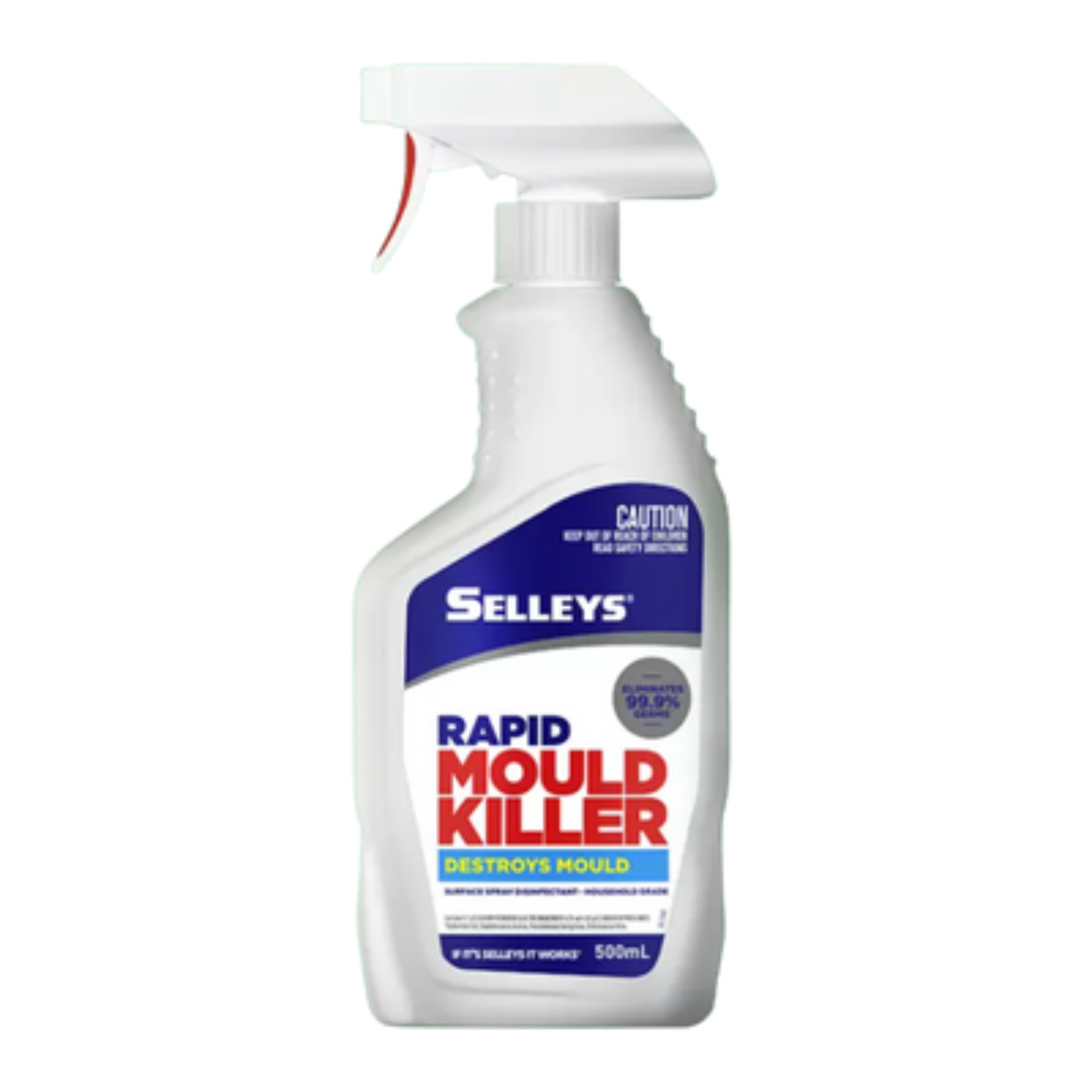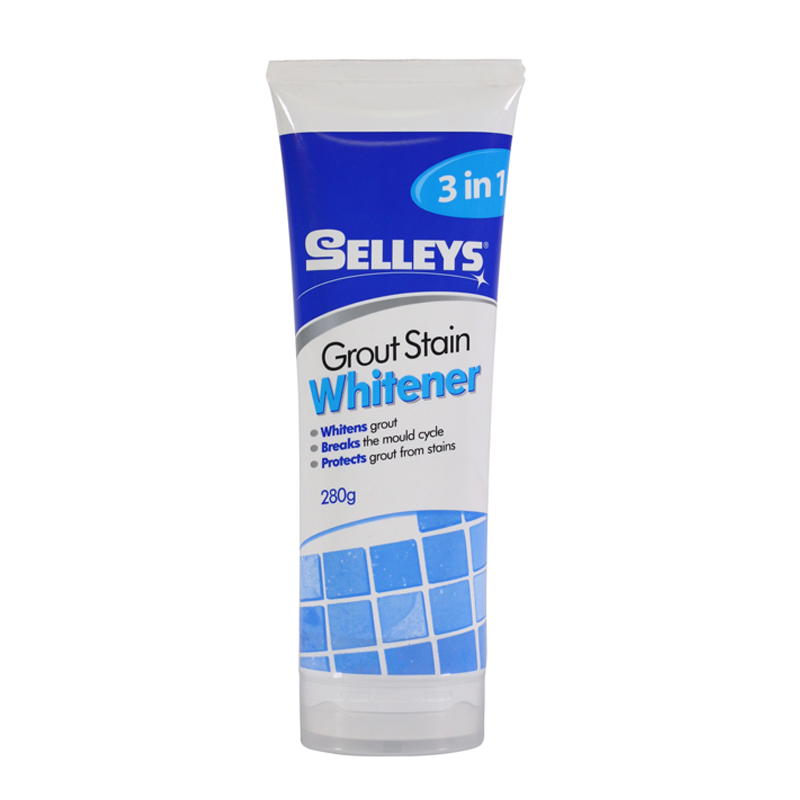As grout lies between the slightly raised surfaces of tiles, it’s prone to trapping dirt, hair and grime. Mould and mildew can also grow on grout in areas with high moisture, such as kitchens and bathrooms, making the place unsightly and unhygienic.
Thankfully, cleaning grout is easy, requiring only common household products and a little scrubbing. Read on to learn how you can give your grout some tender loving care, as well as tips for keeping it clean for a longer time!
Table of Contents
Types Of Grout
Before you start tackling dirty grout, you’ll first need to identify what type of grout it is. This is an important step as it’ll determine the cleaning methods you can use.
Sealed grout
Sealed grout has a protective waterproof layer applied to it. This prevents any liquid from being absorbed into the grout. Thus, you can use chemical-based cleaning solutions such as household cleaners on the surface without worry!
Unsealed grout
Unsealed grout is porous and doesn’t have a protective waterproof coating. Any liquid left to sit on the surface can seep into the grout and remain trapped inside.
As such, 2-part cleaning methods, such as baking soda and vinegar, are unsuitable for unsealed grout. Strong chemical cleaning solutions such as bleach should also be avoided.
Note!
To check whether your grout is sealed or unsealed, drip a few droplets of water onto the grout and check for a change in colour. If the spot darkens, you have unsealed grout. If it doesn’t, your grout is sealed.
Easy Methods For Grout Cleaning
Now that you know which type of grout you have, it’s time to find out how to clean it!
The cleaning method you opt for will depend on the condition of your grout. For regular stains, simple solutions like warm water and vinegar may be able to do the trick. Grout with tough stains, on the other hand, may require stronger solutions like hydrogen peroxide or commercial cleaners.
Read on to find out which method is the most suitable for your cleaning needs.
Method 1: Warm water
Suitable for: All types of grout
In some cases, cleaning grout can be a straightforward process that only requires warm water and a medium-bristle nylon brush.
- Use a spray bottle to spray warm water along the grout, working in small areas at a time.
- With the brush, scrub in a circular motion.
- Finally, leave the grout to air-dry.
It’s important to avoid using too much water, especially for unsealed grout, as excess water can seep into the grout and linger there. Over time, the moisture may facilitate mould and mildew growth.
Note!
Avoid using hard steel brushes during cleaning as they can damage and scratch the grout.
Method 2: Vinegar and warm water
Suitable for: Sealed grout
Vinegar is high in acidity and is an excellent organic solution for cleaning. It can easily break down stubborn buildups of grime, soap scum and dirt.
- Mix equal parts of distilled white vinegar and warm water in a spray bottle.
- Spray the solution on the grout, working on one small area at a time.
- Let the mixture sit for 5 minutes.
- Thereafter, scrub the area with a brush or a stiff toothbrush.
- Once you’re done, use a damp cloth to wipe away any excess liquid.
Method 3: Baking soda and vinegar
Suitable for: Sealed grout
The chemical reaction caused by mixing baking soda and vinegar can help to break down tough stains and stubborn grime. Here’s how you can use these items to clean your grout:
- Make a paste using 2 tablespoons of baking soda and 1 teaspoon of water.
- Prepare a mixture consisting of 1 cup of distilled white vinegar and 1 cup of warm water and pour it into a spray bottle.
- Apply the paste to the grout, then spray the vinegar mixture onto it. You should see the baking soda starting to foam.
- When it stops foaming, scrub the area with a brush and rinse it with some warm water.
- Dry the area with a dry cloth.
Note!
Never mix vinegar and baking soda in an enclosed container! The reaction creates carbon dioxide gas which may cause the container to burst.
Method 4: Hydrogen peroxide
Suitable for: Moderate stains on sealed and unsealed grout
Hydrogen peroxide is an effective solution that can be applied directly to the grout to remove moderate stains.
You can also create a paste by mixing a teaspoon of hydrogen peroxide with 2 tablespoons of baking soda. Apply the paste to the grout and allow it to sit for 5 minutes before wiping it away with a damp cloth.
Note!
Household-grade hydrogen peroxide is non-toxic to humans and dogs. However, it can cause internal bleeding in cats if consumed. If you have cats at home, you might want to consider other methods of cleaning your grout.
Method 5: Selleys White For Life Tile & Grout Cleaner
Suitable for: Various types of grout
Selleys White For Life Tile & Grout Cleaner cuts through soap scum and dirt, restoring your grout to its original pristine condition. It features an antibacterial formula that doesn’t contain any abrasives, harsh acids or bleach.
It also leaves a protective water-repellent layer that helps prevent an accumulation of soap scum, grime and mould.
How to use:
- Spray Selleys White For Life Tile & Grout Cleaner on the grout and leave it to soak for 1 to 2 minutes.
- After which, wipe the product away with a damp cloth or sponge.
- Next, rinse the grout thoroughly using a clean wet sponge to ensure that no residue is left on the surface.
- Finally, wipe the grout dry with a paper towel.
If stubborn grime still remains, apply Selleys White For Life Tile & Grout Cleaner again. Allow the solution to sit for a longer period of time (around 3 – 5 minutes) before repeating steps 2 to 4.
Method 6: Melamine sponge and water
Suitable for: All types of grout
A melamine sponge is easy to use and doesn’t require additional cleaning tools like cloths or brushes. These are the steps on how to use one:
- Wet the melamine sponge and squeeze it to remove any excess water.
- You should see the sponge starting to foam.
- Wipe the grout with the melamine sponge to remove any grime.
Note!
As melamine sponges are abrasive in nature, they can scratch delicate surfaces. Thus, it’s important to use this product carefully and evaluate if it’s suitable for your tiles.
Furthermore, you’re recommended to wear gloves when using a melamine sponge as it can burn your skin.
Method 7: Oxygen bleach
Suitable for: Tougher stains on white grout
If your grout is excessively grimy and badly stained, oxygen bleach can be a viable solution. For the best results, we recommend reading and following the instructions on the product label. However, you may refer to the steps below as a general guide on how to use this product effectively.
- Apply the oxygen bleach solution onto the grout.
- Let it soak for about 10 to 15 minutes.
- Thereafter, rinse the area with clean water.
- Finally, wipe the area with a dry cloth.
Note!
It’s important to ensure that the room is well-ventilated before using bleach to clean your grout. Proper ventilation will help dissipate the bleach fumes and prevent excess inhalation of it.
After cleaning, thoroughly rinse the surface to prevent your pets or children from consuming any bleach residue by accident.
Bonus Method: Spray Selleys Rapid Mould Killer
Removing mould often requires special formulations that are not found in regular cleaning products. If you notice mould growing on your grout, you can use Selleys Rapid Mould Killer to get rid of it.
This solution leaves surfaces clean and hygienic by eradicating mould and 99% of germs. The trigger pack makes for ease of use, letting you aim along the grout effortlessly.
How To Keep Grout Clean For A Longer Time
Grout can get dirty quickly if proper care isn’t taken. Try practising these tips and you may be able to keep your grout clean for a longer time!
Use mats around the house
Laying mats around the house can help prevent dirt and debris from accumulating in your grout. While cleaning grout can be easy, it’s definitely more convenient to wash mats in the washing machine!
Moreover, placing mats can help to prevent mould growth, especially in areas of high moisture such as the kitchen and bathroom.
Keep grout dry
Keeping your grout dry plays a crucial role in preventing grime buildup and mould growth. Some good habits to practise include:
- Ensuring proper ventilation in the house so that moisture can evaporate quickly.
- Not overwetting the floors when mopping so that water doesn’t sit on the grout for too long.
Keeping your grout dry can also facilitate cleaning, as it allows you to sweep or vacuum debris more effectively.
Vacuum or sweep more frequently
Vacuuming or sweeping more frequently will help to nudge debris out of the grout and prevent it from accumulating on the surface. Thus, your grout is kept clean for a longer time.
Apply Selleys Grout Stain Whitener
Selleys Grout Stain Whitener creates a barrier that makes it difficult for mould to take root. This protective layer also prevents the grout from getting stained.
How to use:
- Clean the tiled area and grout thoroughly and ensure that the surface is dry.
- Press the applicator firmly against the grout. Apply even pressure to the tube while moving the applicator along the grout.
- Allow the product to dry for at least 30 minutes. Check if it has dried by wiping a damp cloth over it.
- If it hasn’t dried, leave it on for a longer period of time (not more than 2 hours).
- Afterwards, remove any excess product found on the tiles by wiping diagonally across the grout. Use a lint-free cloth or sponge for this.
FAQs About Grout Cleaning
Why does grout get dirty?
Grout exists in the groove between tiles. This indentation can result in debris and grime being trapped in the grout. Unsealed grout is especially susceptible to mould as it’s porous and retains moisture.
Can I use bleach on grout?
You’re recommended to try other cleaning methods before resorting to bleach. If used together with other cleaning methods, be sure to use the bleach solution sparingly and rinse it off thoroughly.
Can I use steel wool on grout?
No, it’s best not to use steel wool on grout! Steel wool is a harsh abrasive tool that can sand away some of the grout and damage the surrounding tiles. Use soft brushes or sponges, or even an old toothbrush, instead.
How often should I clean grout?
Ideally, grout should be deep cleaned on a monthly basis, and complemented with weekly mild cleaning in between.




